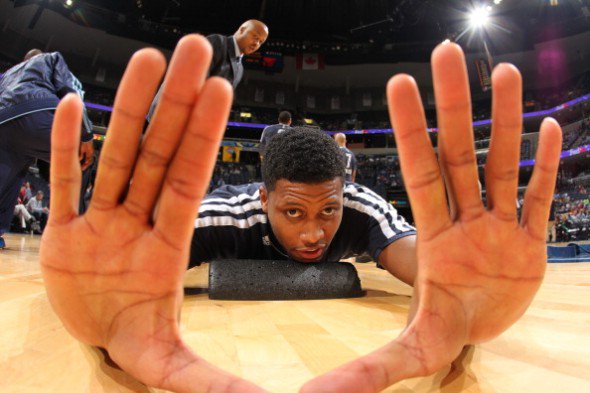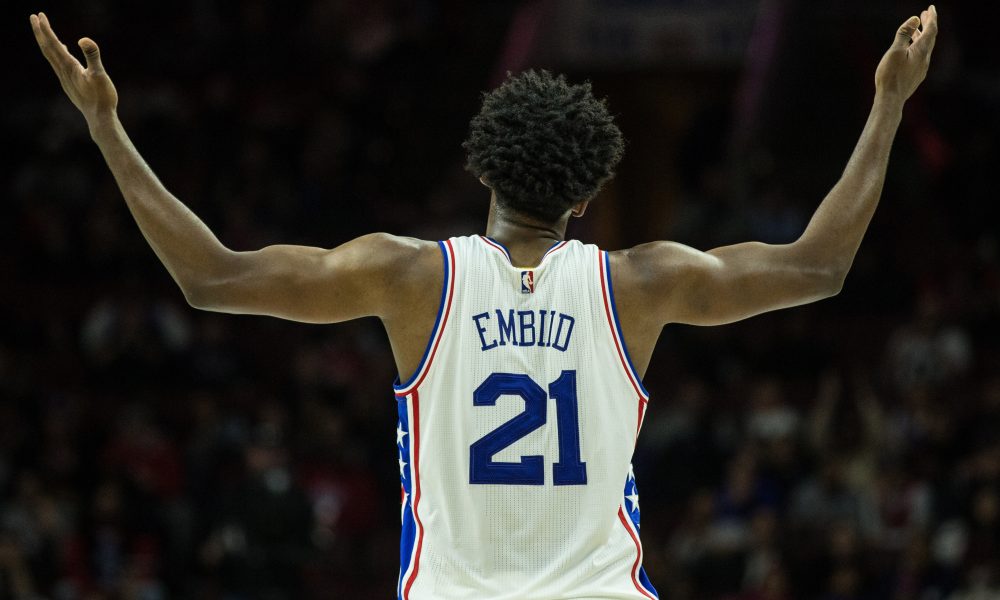January 30th, 2013 was a day of mixed emotions for Toronto Raptors fans, as Bryan Colangelo contributed to a six player (and one draft pick) trade that brought Rudy Gay (and Hamed Haddadi) to Toronto. While he was far from perfect, Rudy Gay instantly became the most talented Small Forward the Raptors had had in years and looked to be a significant talent upgrade despite being a less than ideal on-court fit with Kyle Lowry and DeMar DeRozan.
At the time though, the Raptors were just searching for an identity, while aiming to find any type of positive relevance in the NBA. After all, it had been 4.5 years since their last playoff appearance and they were still saddled with Andrea Bargnani.
Only the most optimistic of Raptors fans fully believed the Rudy Gay acquisition would help nudge the Raptors into the role of quasi-contender, while others were more cautious in their hope, but I doubt any fan would have expected him to contribute to the team’s trajectory in the way he did.
It wasn’t Gay’s arrival in Toronto that prompted four straight playoff appearances, or the four winningest seasons in franchise history, or the team’s first appearance in the Eastern Conference Finals…it was Rudy Gay’s departure that triggered this success.
What truly is amazing though, is that outside of the core of Lowry and DeRozan, you can track the majority of the Raptors’ success directly to the fateful day of December 9th, 2013 when Rudy Gay was sent to Sacramento. He played just 51 games in a Toronto uniform, with none of them coming in the playoffs, but Gay was a key in creating the Raptors as we know them now.
December 9, 2013:
Toronto Trades to Sacramento: Quincy Acy, Rudy Gay, and Aaron Gray
Sacramento Trades to Toronto: Chuck “Booty” Hayes, Patrick Patterson, John Salmons, and Greivis Vasquez
What better place to begin than the trade that started it all. At the time that Rudy Gay (along with Quincy Acy and Aaron Gray) was banished to Sacramento the Raptors were floundering with a record of 7-12. Their .368 winning percentage was good enough for 22nd in the NBA and the conversation was starting to turn quickly towards tanking.
While the Raptors were struggling, on paper they still had enough talent to make the playoffs. The atrocity of the Eastern Conference also helped, as their record was still good enough for 9th in the conference. A crappy record and yet knocking on the playoff door.
The Gay trade was supposed to change all of that. The tank had begun, and other parts were surely to be traded so the tank could gain steam.
Then the Raptors started winning, and a trade featuring Kyle Lowry was rejected by James Dolan. It would have been a steal for the Knicks but James Dolan let his fear of Masai Ujiri prevent them from pulling the trigger.
Toronto quickly rattled off 7 wins in their first 10 games without Rudy and were fourth in the conference at the start of 2014 with a .500 record.
The Raptors would go on to win a then franchise record 48 games, with a .650 winning percentage after the trade.
Each of the rescued former Kings found a role of some kind with Toronto, and gave the Raptors the type of depth that they had rarely had in the team’s history. Patrick Patterson had a resurgence and showed to be at least a capable stretch-PF with good defensive instincts, finishing the year with one of the highest net rating son the team (+10); Chuck Hayes provided the kind of grit/sandpaper that had been missing; and Greivis Vasquez gave Toronto a real back-up point guard so they didn’t have to rely on players like D.J. Augustin and Dwight Buycks.
John Salmons meanwhile was a -8 point per 100 possessions in his 21.4 minutes per game in Toronto. He became the new punching bag for many Raptors fans, but for a team starved for wing play he was almost a necessary evil.
Which brings us to the next step in the Rudy Gay Asset Map…
June 29, 2014:
Toronto Trades to Atlanta: John “Partially Guaranteed” Salmons
Atlanta Trades to Toronto: Lucas Nogueira and Lou Williams
While Salmons was far from valuable on the court, his contract was a perfect asset to own. Entering the off-season Salmons had a partially guaranteed contract for the 2014-15 season. While his total contract was worth a total of $7M, he could be paid $1M to simply go away.
Just a few days following the 2014 NBA Draft, Toronto flipped Salmon’s partially guaranteed deal to the Atlanta Hawks for Lou Williams and Bebe Nogueira, the 16th overall pick in 2013.
Atlanta promptly waived Salmons to help open up additional cap-space, and the Raptors took on a young prospect in Bebe and took a gamble on Lou Williams returning to form following his season ending ACL injury.
He did just that. Lou Williams had a career year in Toronto and walked away with the 6th Man of the Year award in his one season in Toronto. Lou wasn’t ideal, but the cost-to-benefit ratio was a big win for Toronto. He even patented the Lou-for-One at the end of each quarter, which was an incredible sight to watch when it actually worked.
Masai then let Lou Williams walk in the summer as a free agent.
The long-term goal of this trade initially was likely to develop Bebe. While he hasn’t quite lived up to his billing when drafted, he continues to show potential in passing and some elements of defense, and has largely been a net-rating darling when he has received minutes.
Which brings us to stage three of the Rudy Gay Assets…
June 15, 2015:
Toronto Trades to Milwaukee: Greivis Vasquez
Milwaukee Trades to Toronto: Norman Powell (Pick 46 in Draft) and 2017 First Round Pick From Clippers
I’m still trying to understand how Masai made this trade happen on draft night. Out was Greivis Vasquez with just one year remaining on his contract, and in was pick 46 and a future 2017 First Round pick from the Los Angeles Clippers.
In a vacuum, those picks were not expected to be of great value in the first place. Second round picks are frequently used as trade filler and a late first round pick is most often a bust or a bench role player.
But outside of a vacuum those two picks yielded much greater value than that. This trade was finalized late enough on draft night that Toronto did not get to announce the 46th pick on their own, but instead would have told the Bucks who to select. They picked Norman Powell.
In the matter of months Powell went from being unlikely to make the final roster, to having a partially guaranteed three year contract. He has since been a spot starter, and most importantly has almost single-handedly changed the momentum in three playoff series.
From 46th pick to a key rotation piece.
To take it a step further, trading Vasquez opened up the salary cap space to sign the unexpectedly available Cory Joseph, who went on to provide capable minutes at back-up point guard and in dual-point guard line-ups beside Lowry.
If not for Vasquez being in Milwaukee, there would have been no chance to sign Joseph. This trade also gave Toronto the flexibility of having two first round picks in the 2017 NBA Draft, their own and the Clippers (if we’re being legalistic, the pick was the worse between the Clippers and the Nuggets, but that’s splitting hairs).
Although the trade could have been made on its own, having these two picks created additional flexibility when acquiring Serge Ibaka as the Raptors sent the worse of their 2017 first round picks in the trade.
The Raptors would retain the Clippers’ pick after sending their own to Orlando to complete the Ibaka trade, which meant entering draft night with the 23rd pick. Falling into their hands was a 19 year old defensive phenom SF/PF that can guard 1-5, has a developing jump shot, and a 7’2 wingspan.
OG Anunoby became the current culmination of the Rudy Gay Trade Assets. He wasn’t even expected to play until January as he recovered from knee surgery while at Indiana, but he has been getting minutes since opening night and successfully stole the starting Small Forward position while Norman Powell while out injured.
OG has guarded everyone from Kevin Durant, to Kristaps Porzingis, to Bradley Beal and James Harden. He has already earned Casey’s trust when it comes to guarding the league’s top scorers and is currently shooting 50.5 percent from the field and 41.7 percent from three (on 2.7 attempts per game).
His passing has been a pleasant surprise, and each game OG is showing glimpses of his high basketball IQ. Between OG and the rest of the Raptors’ recent draft picks, the Raptors and Masai have managed the difficult task of competing while rebuilding on the fly.
Each year since the Rudy Gay trade the Raptors’ depth players have looked drastically different, and each year they have added a young prospect (or two, or three…) to try and develop into a contributor. The majority of this depth over the last four years can be traced in direct line to December 9th, 2013.
Now that’s how you use assets.



